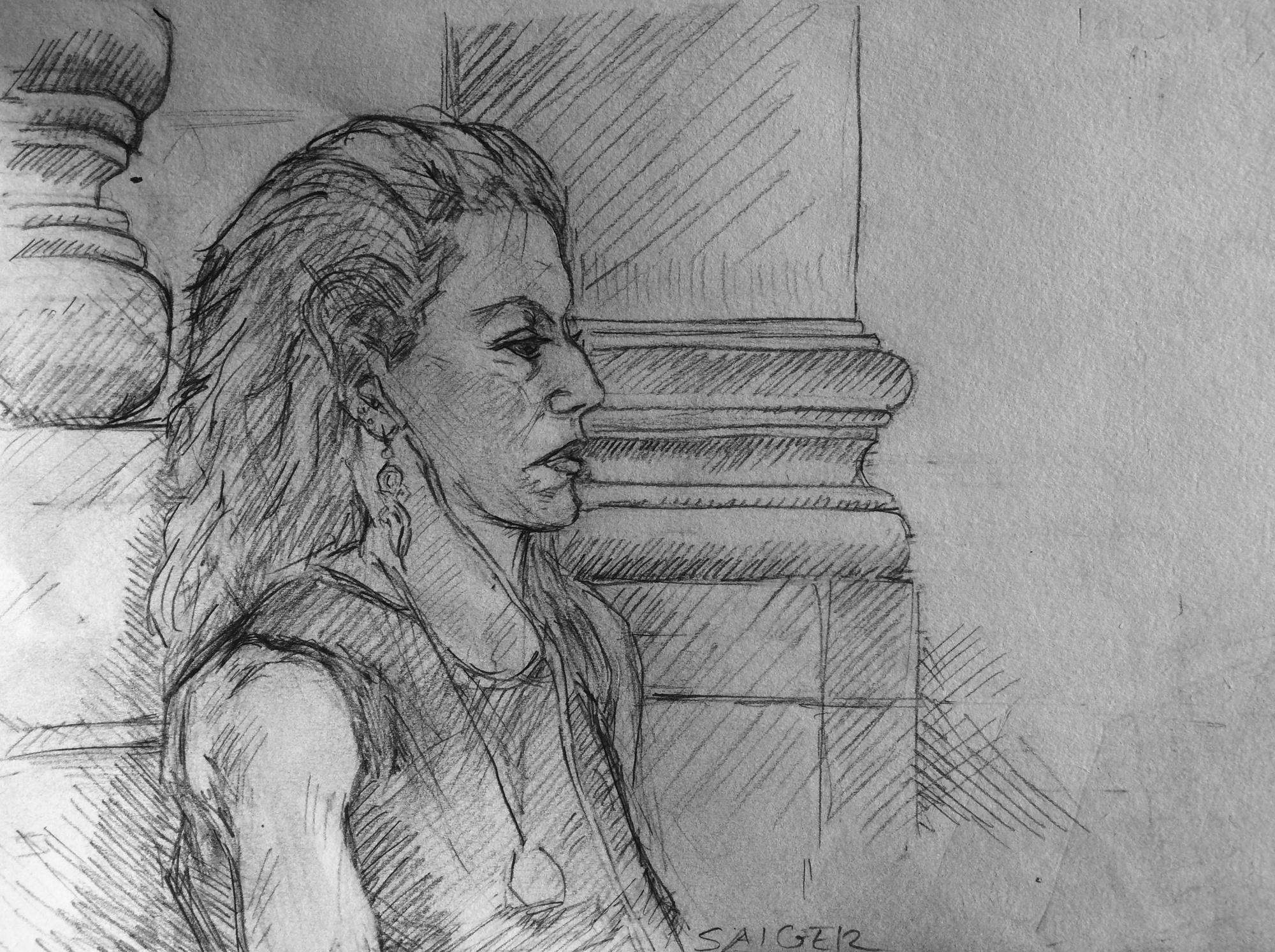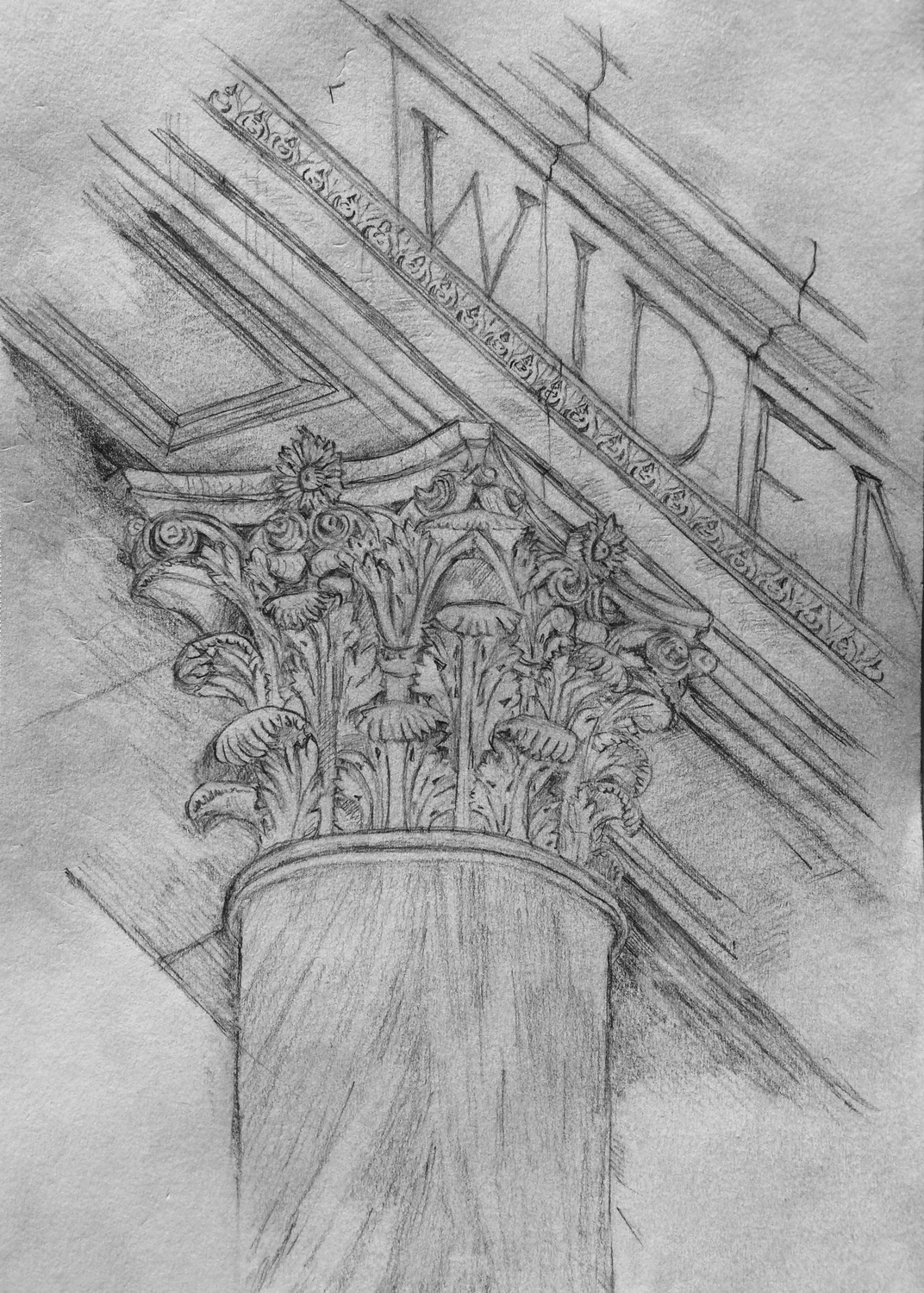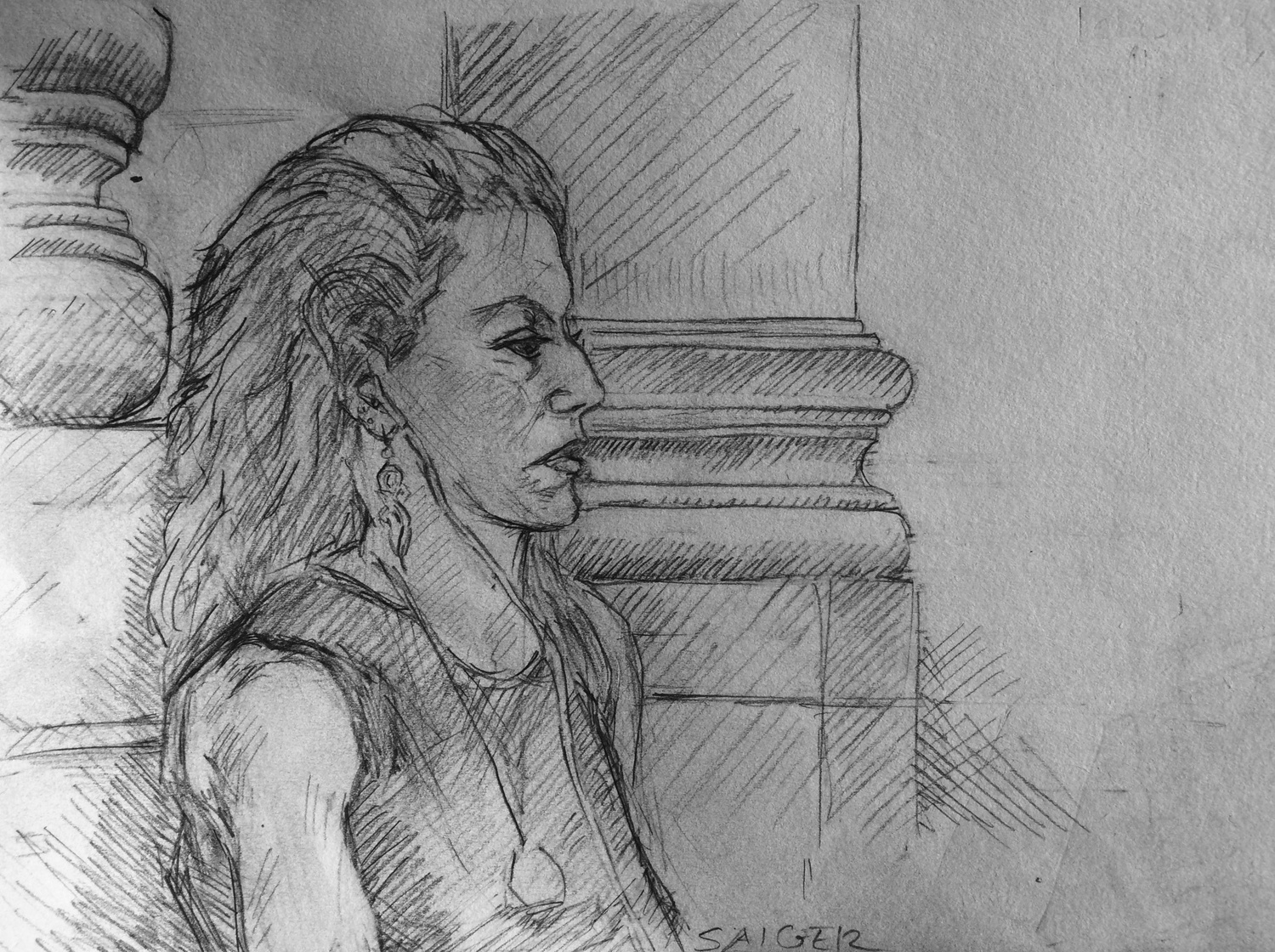
News
Pro-Palestine Encampment Represents First Major Test for Harvard President Alan Garber

News
Israeli PM Benjamin Netanyahu Condemns Antisemitism at U.S. Colleges Amid Encampment at Harvard

News
‘A Joke’: Nikole Hannah-Jones Says Harvard Should Spend More on Legacy of Slavery Initiative

News
Massachusetts ACLU Demands Harvard Reinstate PSC in Letter

News
LIVE UPDATES: Pro-Palestine Protesters Begin Encampment in Harvard Yard
Widener

I must have walked by Widener hundreds of times without giving it a second glance. Then one morning, as I made my way to an unfortunately early class, the capital of one of the library’s columns caught my eye. The next day, I stopped to look. At this point, I’ve spent quite some time staring at the capital, as I’ve tried to understand its details and translate them to a graphite sketch. Its intricacy is astounding. The capital, just one tiny detail on the enormous structure that is Widener Library, stands on its own as an impressive piece of art.
Widener is, however, more than the overall structure, and more even than the minute details. Every building has a purpose and a relationship with the people that walk its halls. For many structures, that purpose is not immediately evident or observable. With Widener, one begins to see that relationship even before setting foot inside the building. Students spill out of the building, sitting, studying and reading on its steps, in proximity to the great library but not hidden from the bustling Harvard Yard. In this way, the world of books and records that is Widener Library and the living, breathing world of the students who browse its shelves blur together.
Want to keep up with breaking news? Subscribe to our email newsletter.


